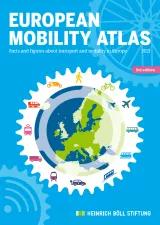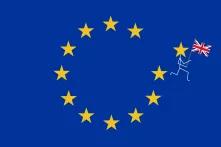It’s hard to imagine travel without it. Yet Brexit, COVID, government disinterest and tighter security have ramped up the cost of travelling through the Channel Tunnel, which opened almost 30 years ago. Jon Worth looks at why the tunnel has not lived up to early expectations.

When work began on the Channel Tunnel in 1988, Prime Minister Margaret Thatcher described it as “the single most exciting and hopeful development in Europe” in a speech. Yet while the engineering achievement has never been in doubt, the economic, social, and cultural impact of the tunnel is probably not what Thatcher and France’s President Mitterrand hoped for at the time.
The headaches started with the UK’s insistence that the Channel Tunnel and (initially) its connection to the rest of the UK railway network should be built with private finance. Thatcher even emphasised this could be more complex than the building itself. “[Eurotunnel’s] task is no longer to demonstrate on paper that the Tunnel is a technical and political possibility. [..] Now they must show that a private sector group can transform plans on paper into a viable commercial venture, and demonstrate their financial case convincingly to the bankers and investors,” Thatcher said at the ratification of Channel Tunnel Treaty. Prescient words, as it turned out.
The problems became very clear very quickly – while the Channel Tunnel was built more or less on time, costs were £9 billion, much higher than the foreseen £5.5 billion. And as the project had been built using a build-own-operate-transfer system, Eurotunnel itself had to recoup these higher costs. That led to debt restructuring and write offs, and repeated losses for Eurotunnel throughout its first decade of operation. The concession to Eurotunnel (now Getlink) to operate the tunnel was increased from 55 to 99 years as a result. Exciting and hopeful it was not, at least financially.
Eurotunnel has to cover is costs, so services are scaled back
Higher costs meant higher prices for cars and trucks using the Le Shuttle service, and so services were scaled back. The expected disappearance of ferry traffic from Dover to Calais failed to materialise – the ferries managed to hold on, and it took until 2014 for the Tunnel to hit 60% of cross-channel traffic.
Rail services beyond the Channel Tunnel itself struggled from the start – through Eurostar services have never hit the projected 16 million customers per year and bumped along at around 6 million for the first decade of the tunnel’s operation. Even steady progress in the 2010s resulted in just 11.1 million passengers in 2019. Part of the problem at the start was the lack of a high speed rail connection between the Tunnel and London. The High Speed 1 line was only fully completed in 2007, more than a decade after the opening of the Tunnel. The idea to run night trains through the Channel Tunnel never even materialised.
Through freight trains have fared even worse. Dependent on the decrepit network in Kent, through freight has fallen back from 3 million tonnes in 1998 to just over 1 million tonnes today – and all of that well below the projected 6 million tonnes. Even today, three decades on from the tunnel’s opening, loading gauge constraints in the UK (that would be cheap to solve) limit freight potential, and most of the locomotives for Channel Tunnel freight trains have been stored or sold to Romania and Bulgaria.
Geopolitical headaches
Heightened terrorist fears meant Eurostar, like the airlines, upped security from 2001 onwards. While juxtaposed controls (where UK border controls happen before a passenger has left France) from the start of the Channel Tunnel operations made sense for the sake of passenger flow, especially for Le Shuttle, growing UK border paranoia throughout the 2010s had an impact on tunnel operations and costs, and the need for juxtaposed controls has meant expansion of Eurostar beyond its core routes is next to impossible - only Amsterdam has been added as a destination in addition to the original destinations of Paris and Brussels.
Then came the UK’s fateful decision to vote to leave the European Union in 2016, putting the Channel Tunnel at the external border of the EU from 1 February 2020. While the terminals for Le Shuttle are not as geographically constrained as the Port of Dover, increased costs and delays slowed down the processing of cars and trucks alike.
Eurostar too took a major hit, as border procedures post-Brexit have limited how many passengers can be processed at the St Pancras terminal it has been using since 2008, which is too small. A new digital border system for entry into the EU’s Schengen area in 2024 will complicate matters even further.
And all of this in the past four years has been done while the travel industry has been struggling to deal with the effects of the COVID pandemic, and the UK government – mirroring Thatcher’s hands off approach of the 1980s – refused to provide finance to Eurostar in the way it had done to national rail operators. Eurostar has subsequently chosen to stop serving Ebbsfleet and Ashford, stations in Kent that were supposed to enjoy the greatest economic and cultural benefit from the construction of the Channel Tunnel.
Not much light at the end of the Tunnel
After three decades of operation, it is impossible to imagine life without the Channel Tunnel. Yet a nagging sense of its unfulfilled potential remains.
While trucks and cars on Le Shuttle have, eventually, reached the projected volumes (and Brexit border headaches have hurt ferry ports more), it is long distance passenger and freight services that offer untapped opportunities.
A slew of companies – Evolyn, Heuro, Virgin Trains, Renfe, and even Getlink itself – identify potential for trains to London as rivals to Eurostar. They see a monopoly operator catering to fewer stations than in the past, and at a higher price point, and see opportunities to step in to rival the incumbent, both on the core London-Paris/Brussels routes, and potentially to destinations further into mainland Europe.
However, the barriers these firms face – sourcing trains that are compatible with the Tunnel’s signalling and stringent fire safety systems, access to stations where terminal capacity is limited, and the headaches related to security controls and especially passport checks – are complicated, expensive and time consuming to overcome.
The post-Brexit political context casts a long shadow as well. For the UK’s pro-Brexit Conservative government, solving any problems relating to the Channel Tunnel is a low priority, as it is that thing that goes to Europe. On the other side, the Tunnel is a low priority for Emmanuel Macron’s administration as well – let the Brits stew in the problems they have made for themselves, and let us not forget the majority owner of Eurostar is French rail company SNCF, owned by the French state.
For now, there is not much light at the end of the Tunnel.
The views and opinions in this article do not necessarily reflect those of the Heinrich-Böll-Stiftung European Union.


